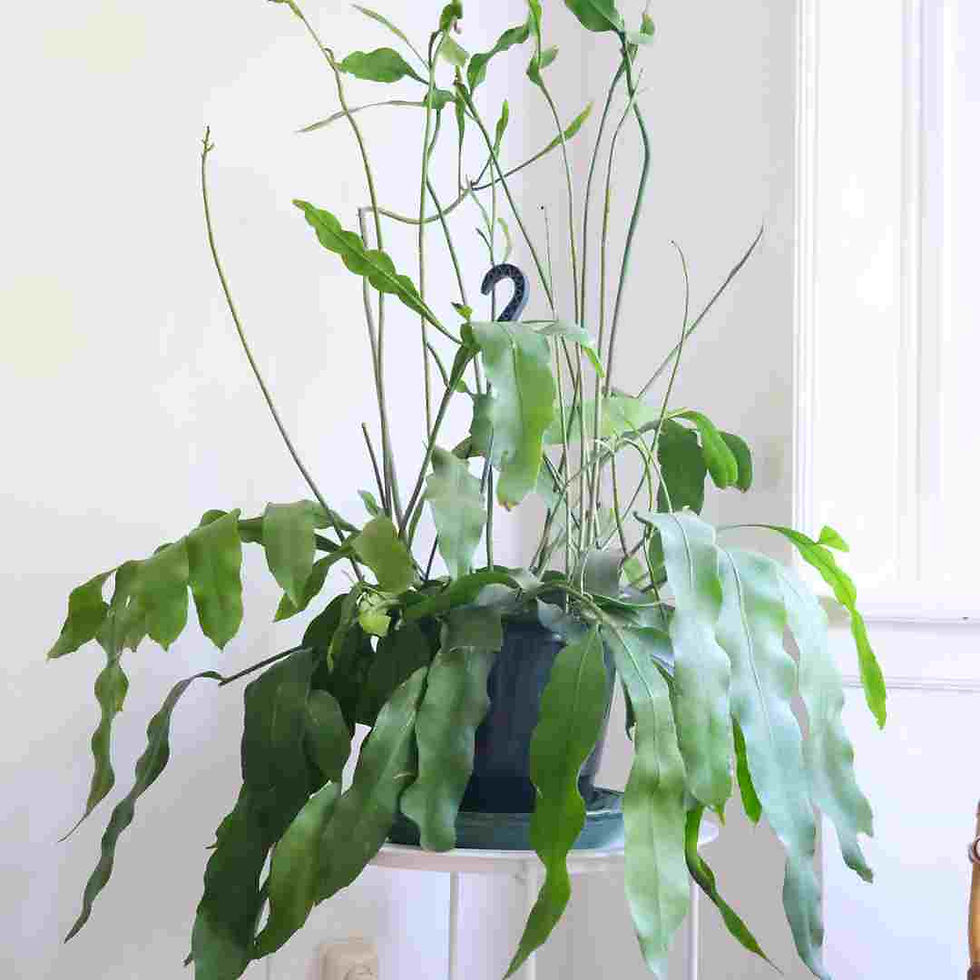From Jungle to Minimalism: How to Style Sculptural Tropical Plants in Modern Homes
- Astrid van Essen
- Oct 5
- 3 min read
I’ve always loved the contrast between nature’s wild shapes and clean, structured interiors. When you bring plants like Epiphyllum oxypetalum (Queen of the Night) or Thaumatophyllum bipinnatifidum (Tree Philodendron) into a minimalist home, you add texture, movement and life. The key is knowing how to balance their organic forms with a calm, modern aesthetic.

Choosing the Right Plants
Not all greenery suits minimalist spaces. Look for plants with sculptural qualities, dramatic foliage or a story behind them.
Epiphyllum oxypetalum brings soft, flowing lines and occasional large, fragrant blooms.
Tree Philodendron makes a bold statement with deeply lobed leaves that frame light beautifully.
These two offer visual contrast and natural rhythm, creating balance between delicacy and structure.
Pairing with Concrete Décor
If you're wondering how to style these sculptural tropical plants, concrete planters are ideal for making a styling statement with plants. Their neutral tone grounds the visual chaos of large or trailing leaves.
Use smooth, light grey concrete or ceramic pots to highlight the glossy stems of the Queen of the Night.
Choose textured or pedestal-style planters for the Philodendron to elevate its canopy.
A simple tray or concrete bowl beneath adds cohesion and helps frame the greenery as part of your décor rather than an afterthought.
Light and Placement
These tropical plants thrive in bright, indirect light. Position them near a window where sunlight is filtered through sheer curtains. Avoid harsh midday sun that can scorch their leaves.

Grouping plants of different heights works well, too. The Queen of the Night can trail from a shelf or pedestal while the Philodendron fills floor space. Together they form a living sculpture that shifts subtly with the light throughout the day.
Maintaining Balance
Minimalist design is about intention. Limit colour distractions by keeping pots in neutral shades—such as cement, off-white, or muted clay. Introduce visual balance through texture instead of clutter. A linen cloth, ceramic bowl or wooden accent beside the planter adds warmth without competing with the plant’s shape.
Creating a Calming Atmosphere
Both plants add more than beauty. The Philodendron helps purify indoor air, while the Queen of the Night’s night-blooming flowers offer a fleeting, sensory experience. Together they encourage a slower rhythm at home—one that invites you to pause and notice what changes from day to night.
How to Style Sculptural Tropical Plants: 5 Frequently Asked Questions
1. Can I grow a Queen of the Night indoors?
Yes. It grows well indoors with bright, indirect light and good airflow. Avoid overwatering and ensure the pot allows for free drainage.
2. How often should I water these plants?
Let the top few centimetres of soil dry before watering again. Both prefer slightly moist but not soggy conditions.
3. Do they need fertiliser?
Feed every 4–6 weeks in spring and summer using a balanced liquid fertiliser diluted to half strength.
4. Will the Queen of the Night bloom indoors?
Yes, although only under ideal lighting and humidity conditions. Mature plants bloom at night, usually during warmer months.
5. What planter size is best for a Tree Philodendron?
Choose a wide, stable pot with space for roots to spread. Concrete planters are ideal for their weight and stability.



Comments